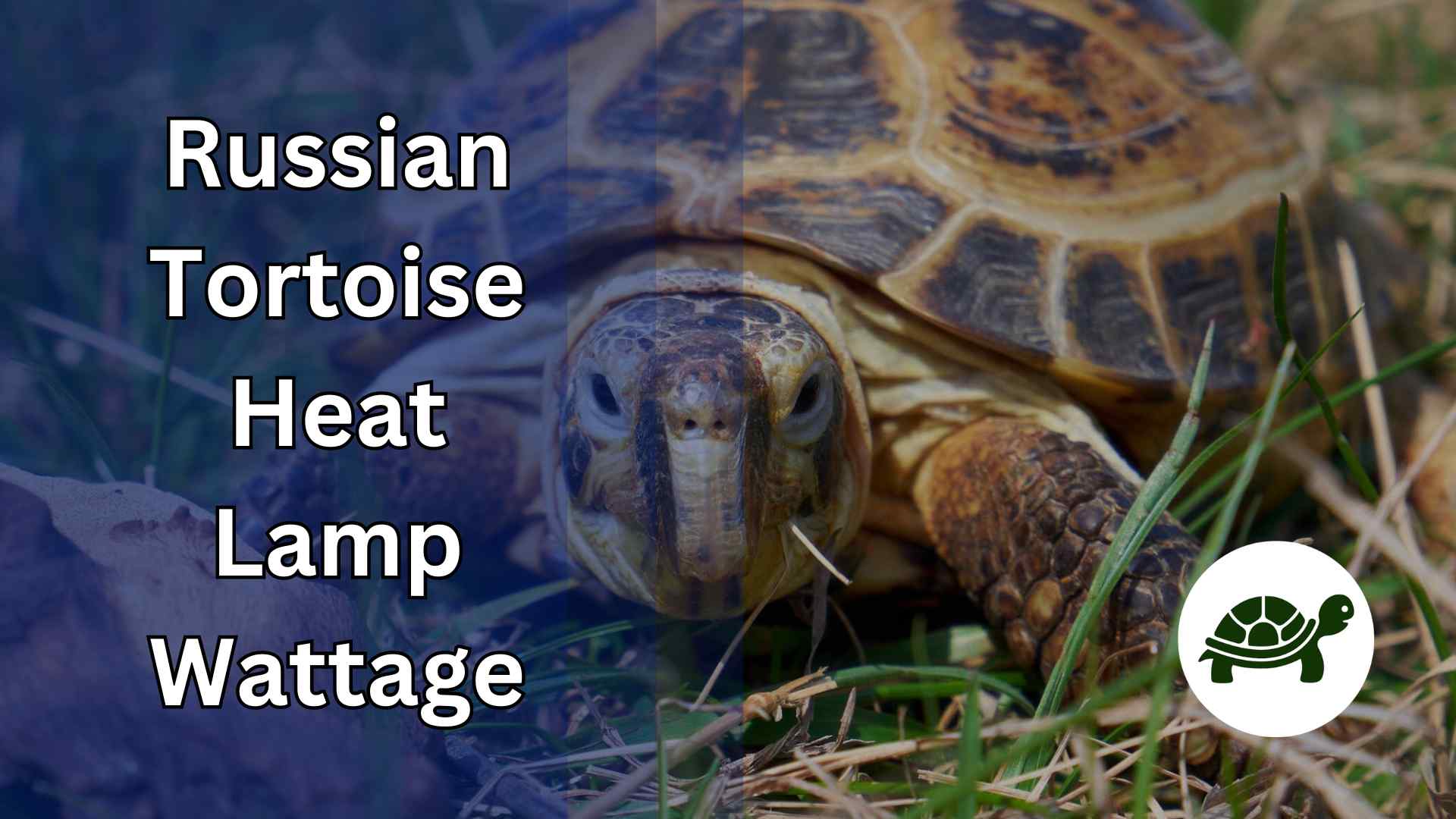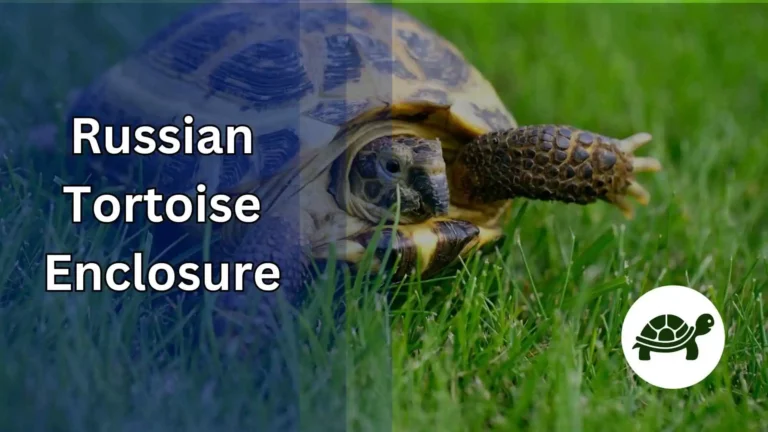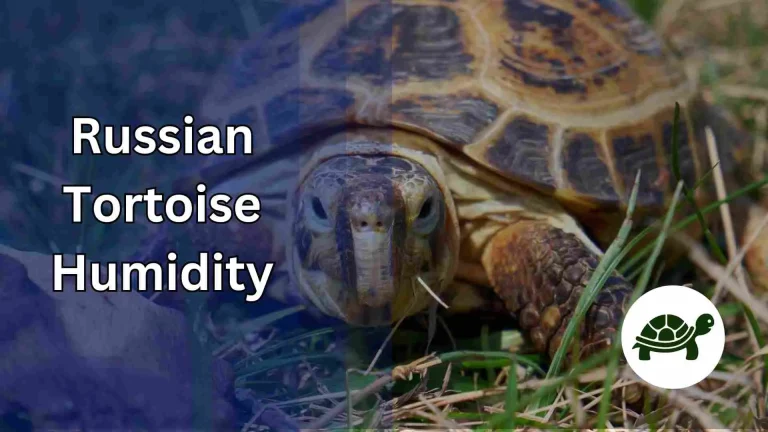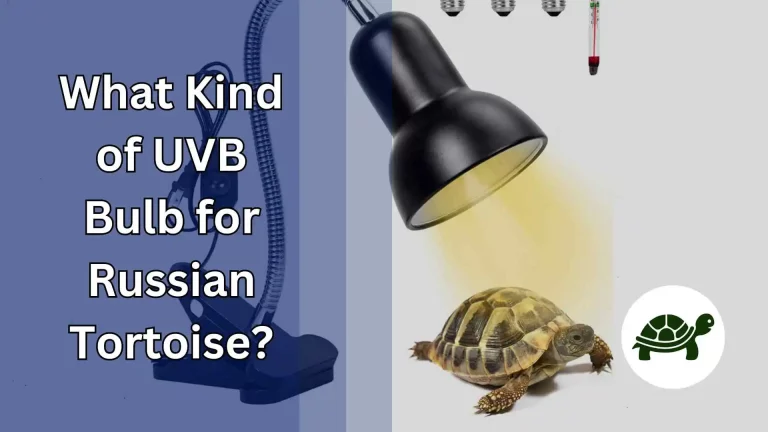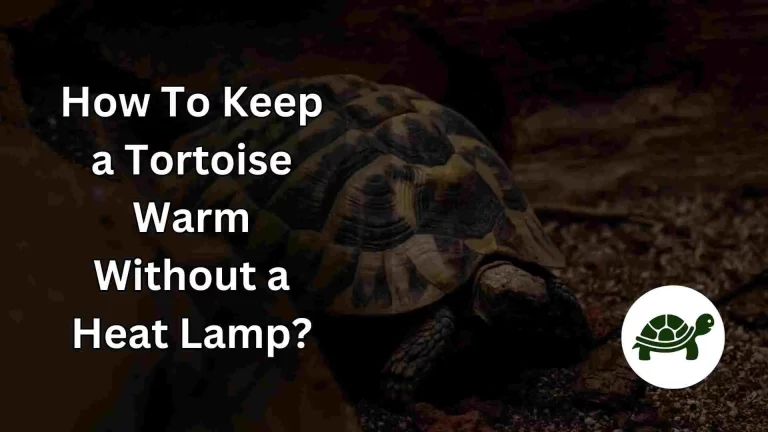Russian Tortoise Heat Lamp Wattage – All You Need To Know
Just like us, our shelled companions thrive when their environment is just right. For the resilient Russian tortoise, that means basking under the sun in the wild steppes of Central Asia. However, in captivity, replicating that ideal warmth requires a bit of human intervention. Enter the role of the trusty heat lamp, a beacon of comfort for our cold-blooded friend. But it’s not as simple as just picking any lamp; the right wattage is crucial.
Think of wattage as the pulse of the heat lamp, determining its strength and reach. For the Russian tortoise, which is accustomed to specific temperature ranges, the wrong wattage could mean discomfort at best and health risks at worst. As tortoise enthusiasts, it’s our duty to ensure their tiny habitat feels as close to home as possible, and this starts with the radiant glow of the perfect heat source.
As we delve deeper into the world of Russian tortoise care, this post will be your compass, guiding you through the nuances of choosing the best heat lamp wattage. Whether you’re a seasoned reptile lover or new to the tortoise tribe, let’s embark on this enlightening journey together, ensuring our tortoises bask in comfort.
The Natural Habitat of Russian Tortoises
To truly understand the needs of the Russian tortoise, it’s essential to journey—in spirit, at least—to their natural homeland. Imagine vast stretches of the Central Asian steppes, a unique landscape that’s a mix of grasslands, barren deserts, and sparse shrubbery. The sun casts its golden rays, warming the earth beneath, and that’s where our hardy tortoise finds its solace.
The steppes are a place of temperature contrasts. While summers can be intensely warm, with daytime temperatures often soaring into the high 90s (°F), winters tell a different story, plunging into the freezing realm. This diurnal temperature fluctuation is something the Russian tortoise is evolutionarily adapted to. In captivity, mimicking these natural temperatures isn’t just a luxury; it’s a necessity for their well-being.
In designing our pet’s enclosure, the goal is to mirror Mother Nature as closely as possible. Keeping in mind the warmth of the steppes during sunny days and the cooler nights, we can provide our tortoises with a habitat where they can thrive, bask, and retreat as they would in the wild. Recognizing and replicating these temperature nuances is the key to creating a harmonious environment for our Russian tortoise.
Why Correct Heat Lamp Wattage Matters?
At first glance, it might seem that any heat source would suffice for our Russian tortoise friends. However, the wattage of a heat lamp does more than just warm their bony shells. It affects their very livelihood, from the rate at which they digest food to their overall mood and activity levels. Imagine wearing a thick winter jacket on a summer day or a light t-shirt during a snowstorm; that’s the discomfort of a wrongly wattaged lamp for these creatures.
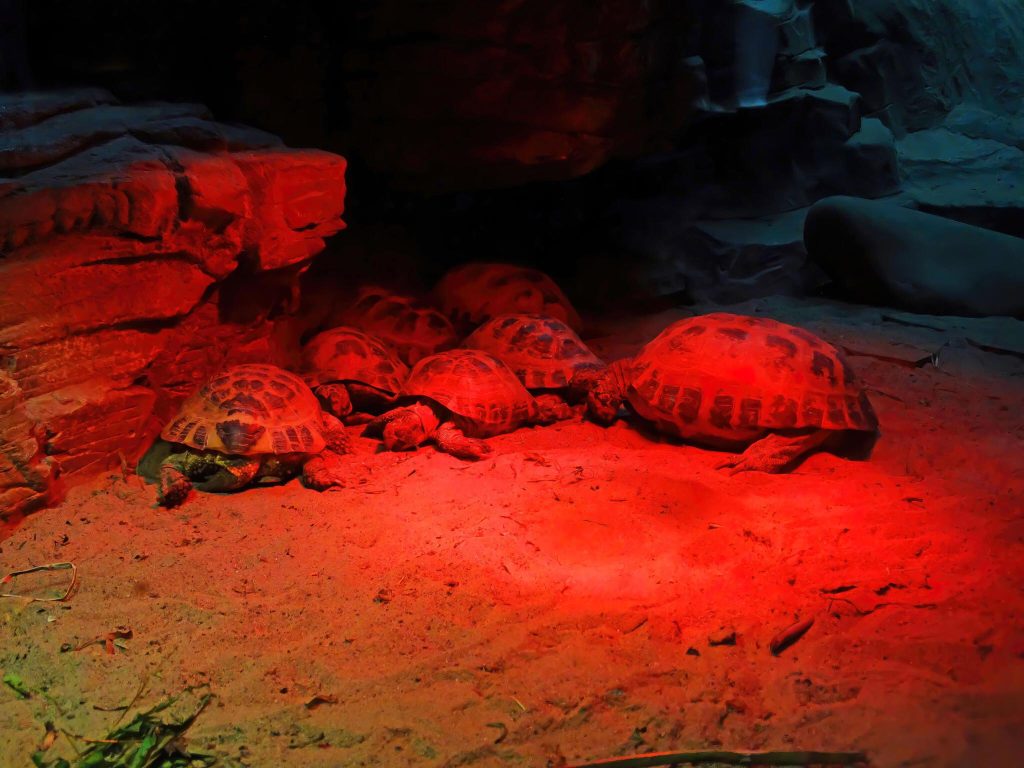
The challenge isn’t merely avoiding the extremes of too hot or too cold. Russian tortoises are creatures of balance. While excessive heat can lead to dehydration, rapid metabolism, or even burns, insufficient heat can slow down digestion, leading to potential health issues. Correct wattage ensures they get the ideal basking temperature, a place where they can soak up warmth and regulate their body functions optimally.
Ensuring the right heat lamp wattage is a testament to our commitment as caregivers. It’s about understanding that even a few degrees can make a world of difference in their world. By honing in on the right wattage, we’re not just providing warmth; we’re offering a quality of life that mirrors the natural rhythms and comforts of the vast steppes they call home.
Factors Influencing the Choice of Wattage
The Dimensions of Comfort
Think of choosing the wattage for a heat lamp like setting the thermostat in your home. Just as the size of your living space affects the heating or cooling required, the dimensions of a tortoise enclosure play a pivotal role. A vast terrarium might require a higher wattage lamp to achieve the same temperatures as a smaller one, simply due to the increased space.
Room’s Natural Climate
Not all rooms are created equal. An enclosure placed in a naturally warm room—perhaps one with large windows or lots of sunlight—might need a different heat lamp wattage than one in a cooler basement or air-conditioned space. Understanding your room’s ambient temperature is key to ensuring our shelled friends don’t feel the chills or the unexpected sizzles.
Materials & Insulation
The materials used for the enclosure can also influence temperature dynamics. Glass terrariums, for instance, might retain heat differently than wooden or plastic ones. The insulation properties of the chosen habitat can either amplify or mitigate the effect of the heat lamp, making wattage adjustments crucial.
Surrounding Heat Sources
It’s not just about the lamp. Other heat sources, like under-tank heaters or the presence of additional lamps, can change the wattage needs. When orchestrating the perfect thermal dance, it’s essential to account for all players on the stage, ensuring harmony and balance in our tortoise’s little slice of paradise.
Recommended Wattage Ranges for Different Scenarios
Size Does Matter
One of the foremost considerations in choosing the right wattage is the size of the enclosure. For small terrariums, typically around 20-40 gallons, a heat lamp ranging from 50-75 watts might be apt. However, as you move to medium (40-60 gallons) or larger enclosures (60 gallons and above), you might find yourself needing lamps with wattage between 75-100 watts or even up to 150 watts, respectively.
Seasonal Sensations
Just as you’d adjust your home’s thermostat based on the weather outside, Russian tortoises need seasonal wattage adjustments. During colder months, you might need a slightly higher wattage to maintain optimal temperatures, whereas, in the warmer months, you could dial it back to ensure the enclosure doesn’t overheat.
Heat Lamp Brands & Types
Not all heat lamps are born equal. While some brands might offer more efficient heating with lesser wattage, others might require a bit more power for the same heat output. Additionally, the type of bulb—be it halogen, ceramic, or infrared—can influence the wattage choice. It’s always good practice to consult reviews, research brands, and perhaps even seek expert advice to find the lamp that harmonizes best with your setup.
Tailoring to Your Tortoise
At the end of the day, each Russian tortoise is an individual with its own quirks. Regularly observing their behavior—whether they’re basking frequently, avoiding the heat, or seeming lethargic—can offer clues about wattage adjustments. The goal is to craft a sunlit haven, where they feel right at home, basking in the perfect glow.
Tips to Ensure the Right Temperature
The Trusty Thermometer
Much like how we rely on weather apps to dress appropriately, a reliable thermometer is the Russian tortoise’s forecast tool. Positioning thermometers at both the warm and cool ends of the enclosure provides a clear temperature gradient picture. It’s an invaluable asset in tweaking heat lamp wattage or position to hit the temperature sweet spot.
Creating the Perfect Gradient
In nature, Russian tortoises can move between sun and shade to regulate their body temperature. Replicating this in captivity means ensuring a temperature gradient in the enclosure. Place the heat source on one end, allowing the other end to stay cooler. This gradient setup offers your pet the choice to bask in warmth or chill in cooler zones, mimicking their natural behavior.
Adjusting Lamp Position
Not all adjustments require a wattage change. Sometimes, simply moving the lamp closer or farther from the enclosure can make a noticeable temperature difference. Using adjustable lamp stands or suspensions offers flexibility, ensuring the radiant warmth envelops your tortoise just right, without overwhelming or underwhelming them.
Routine Checks
Just setting up the heat lamp and forgetting about it isn’t the recipe for success. Regular temperature checks, especially during significant weather shifts or room changes, ensure consistent comfort. These periodic checks act as your pulse on the enclosure’s climate, allowing timely interventions if things drift off course.
Safety Precautions
Avoiding the Burn: Just as we can be startled by unexpectedly touching a hot surface, Russian tortoises are no different. Ensuring the heat lamp is safely out of reach, or using protective guards, prevents curious tortoises from accidental burns. The right barrier between the heat source and your pet ensures warmth without the risk.
Opt for Quality
Not all heat lamps are created equal. Investing in reputable brands minimizes the risk of malfunctions or flare-ups. Remember, it’s not just about the warmth; it’s about delivering that warmth safely. Reading product reviews, consulting fellow reptile enthusiasts, and trusting trusted brands can be your shield against potential hazards.
Monitor for Overheating
An excessively warm enclosure is not just uncomfortable; it can be a health risk. Using thermostats or timers to regulate the heat lamp’s operation can be a game-changer. These devices switch off the lamp once the desired temperature is reached, ensuring the environment remains stable, safe, and tortoise-friendly.
Stay Vigilant
Beyond the tools and equipment, your observation is the best safety net. Regularly inspecting the heat lamp for wear, damage, or potential issues keeps surprises at bay. Being proactive, noting changes in your tortoise’s behavior, or spotting unusual lamp behavior can be the difference between a safe haven and an unforeseen mishap.
Alternative Heating Solutions
Under the Surface
While overhead heat lamps dominate the reptile heating scene, under-tank heaters offer an alternative warmth source. Mimicking the geothermal warmth that naturally radiates from the earth, these heaters provide belly heat, which is especially beneficial for aiding digestion in Russian tortoises. Plus, there’s an added bonus: no light disturbance during the nighttime.
Radiant Heat Panels
Imagine the gentle warmth of sunlight filtering through a canopy, warming everything in its path. Radiant heat panels do precisely that, emitting infrared heat without the light. They’re an excellent choice for larger enclosures, distributing warmth more uniformly and ensuring every corner gets its share of coziness.
Ceramic Heat Emitters
Light can be disruptive, especially during a tortoise’s downtime. Ceramic heat emitters (CHE) are champions in delivering heat without any light. They screw into standard lamp sockets and radiate a comforting warmth, making them perfect for maintaining nighttime temperatures without disturbing the natural day-night cycle.
Remember the Basics
Whichever alternative you lean towards, the principles remain the same. Monitoring temperature, ensuring safety, and observing your tortoise’s behavior are paramount. It’s all about creating a habitat that not only warms their shell but also warms their heart, replicating the natural embrace of the Central Asian steppes.
Frequently Asked Questions (FAQs)
1. How often should I replace the heat lamp for my Russian tortoise?
Just like any light bulb in your home, heat lamps have a lifespan. Even if they don’t burn out, their efficiency can wane over time. For optimal performance and safety, it’s generally recommended to replace heat lamps every 6 to 12 months, depending on usage and the manufacturer’s guidelines.
2. My tortoise seems to be avoiding the heated area. What could be the reason?
Behavior can be a telling sign. If your Russian tortoise avoids the basking zone, it could indicate that the area might be too hot. Regularly check the temperature and adjust the wattage or lamp position as needed. Also, ensure there’s a proper temperature gradient, allowing your pet to choose its comfort zone.
3. Can I use regular household bulbs for heating?
While household bulbs might emit some heat, they aren’t designed for reptile care. Reptile-specific heat lamps are crafted to provide the right type of warmth and, in some cases, essential UVB rays. For the health and comfort of your Russian tortoise, it’s best to stick with lamps meant for reptile enclosures.
4. Do Russian tortoises require UVB lighting along with heat?
Absolutely! UVB lighting is vital for Russian tortoises as it helps them synthesize vitamin D3, crucial for calcium absorption and shell health. While heat lamps cater to their temperature needs, UVB lights ensure they get the necessary rays for their overall health.
5. How can I ensure my heat lamp doesn’t dry out the enclosure too much?
A well-balanced environment is key. To maintain adequate humidity levels, consider using a humidifier, placing a shallow water dish in the enclosure, or misting the habitat occasionally. Regularly monitor the humidity and adjust your heating solutions to strike the right balance between warmth and moisture.
Conclusion
In the journey of providing the coziest and healthiest habitat for our Russian tortoises, understanding the nuances of heat lamp wattage becomes paramount. This not only ensures their physical well-being but also closely replicates the warmth of their natural Central Asian abode, giving them a slice of home in our living spaces.
As with many aspects of pet care, it’s a blend of science, observation, and a dash of intuition. By staying informed, regularly monitoring, and being attuned to our tortoise’s behaviors, we craft an environment where they can thrive, bask, and simply be their wonderful selves.
Choosing the right wattage, considering alternative heating methods, and always prioritizing safety are the trifecta of a successful Russian tortoise habitat. Remember, the glow from a heat lamp does more than just warm their shells—it lights up their world, ensuring every day is a sunny day, no matter the weather outside.

